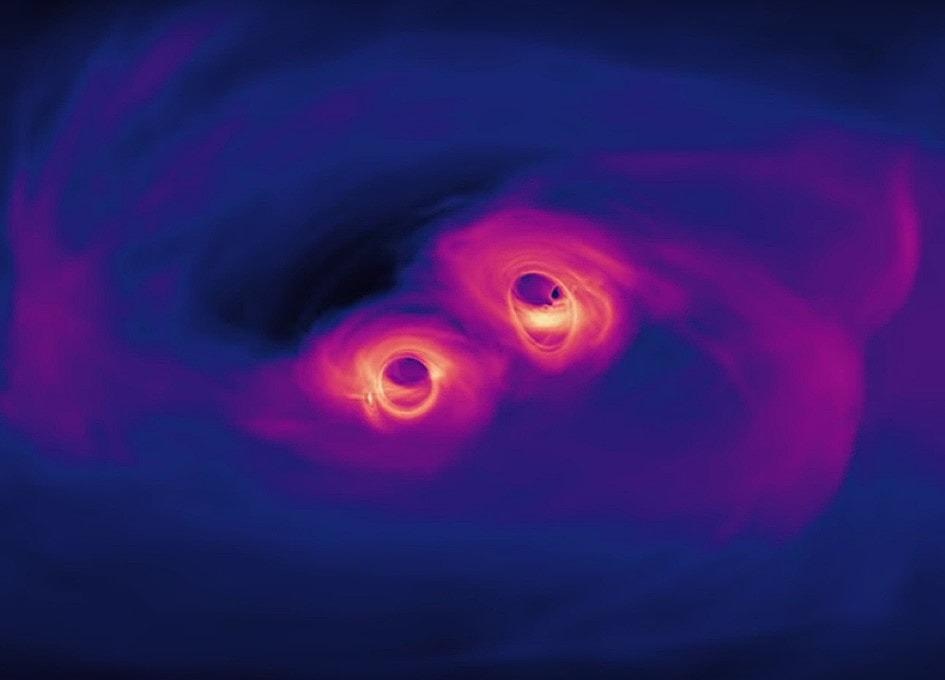Supermassive black holes weighing million to billion times more than the Sun can be found in all galaxies. During the collision of galaxies, pairs of supermassive black holes found at their centers also end up on the collision course.
 A simulation of colliding supermassive binary black holes. Image Credit: NASA.
A simulation of colliding supermassive binary black holes. Image Credit: NASA.
However, two black holes slamming into each other is not common and it might take millions of years for this phenomenon to occur. Gravitational waves are ripples in space-time produced by the black hole binary when the distance between two black holes is adequately small.
First observed in 2015, gravitational waves were identified from much smaller black holes that weigh about 10 times the Sun. Gravitational waves emitted by supermassive black holes remain a mystery to researchers. Their discovery would be instrumental in understanding how galaxies and stars develop and evolve, as well as in detecting the origin of dark matter.
Dr. Boris Goncharov and Prof Ryan Shannon, scientists from the ARC Centre of Excellence for Gravitational Wave Discovery (OzGrav), have tried to solve this mystery in recent research. They used the latest data from the Australian experiment dubbed the Parkes Pulsar Timing Array to detect these enigmatic gravitational waves from supermassive black holes.
The experiment studied radio pulsars: very dense collapsed cores of massive supergiant stars (termed as neutron stars) that emit radio waves, similar to a beam of light from a lighthouse. The timing of these pulse emissions is highly precise, whereas the background of gravitational waves progresses and delays the arrival times of the pulse in an anticipated pattern across the sky, by almost the same amount in all pulsars.
The scientists have now learned that the arrival times of these radio waves do reveal deviations with similar properties as anticipated from gravitational waves. However, additional data is required to determine whether radio wave arrival times are interconnected in all pulsars across the sky, which is believed to be the “smoking gun.”
Similar outcomes have also been achieved by partnerships based in Europe and North America. These partnerships, together with research groups from China, India and South Africa, are keenly merging datasets under the International Pulsar Timing Array, to enhance the sky coverage.
This finding is said to be a precursor to locating gravitational waves from supermassive black holes. However, Dr. Goncharov and his team highlighted that the detected variations in the radio wave arrival times could also be because of ipulsar-intrinsic noise.
To find out if the observed ‘common’ drift has a gravitational wave origin, or if the gravitational-wave signal is deeper in the noise, we must continue working with new data from a growing number of pulsar timing arrays across the world.
Dr. Boris Goncharov, Researcher, ARC Centre of Excellence for Gravitational Wave Discovery
Journal reference:
Goncharov, B., et al. (2021) On the Evidence for a Common-spectrum Process in the Search for the Nanohertz Gravitational-wave Background with the Parkes Pulsar Timing Array. The Astrophysical Journal Letters. doi.org/10.3847/2041-8213/ac17f4.